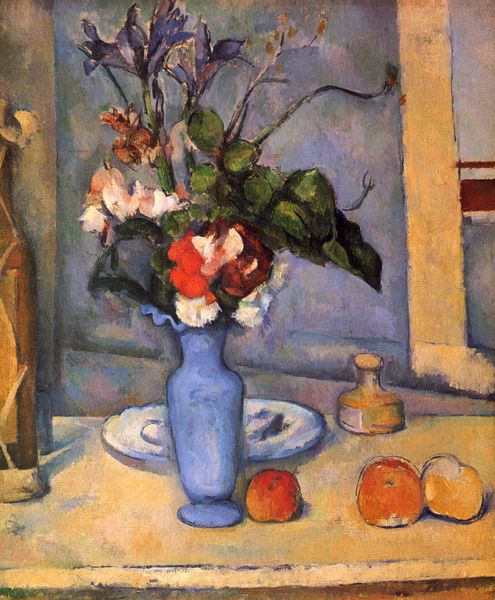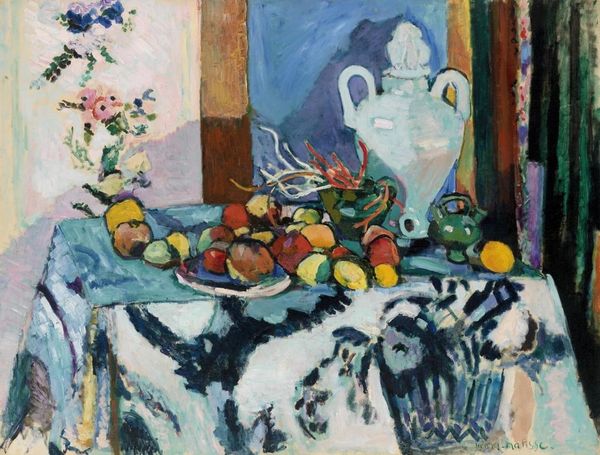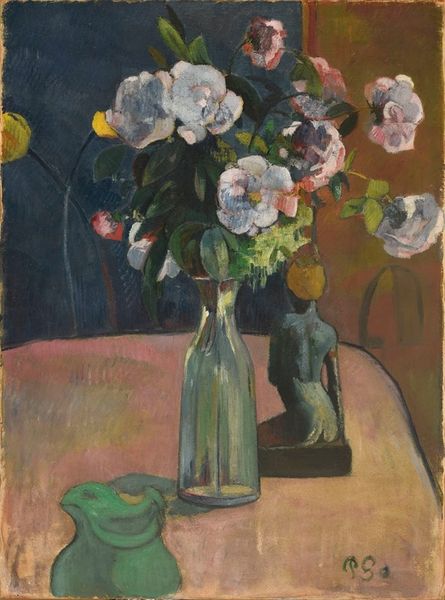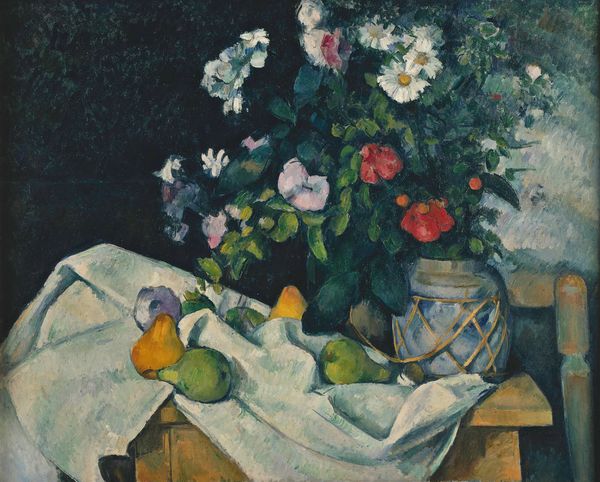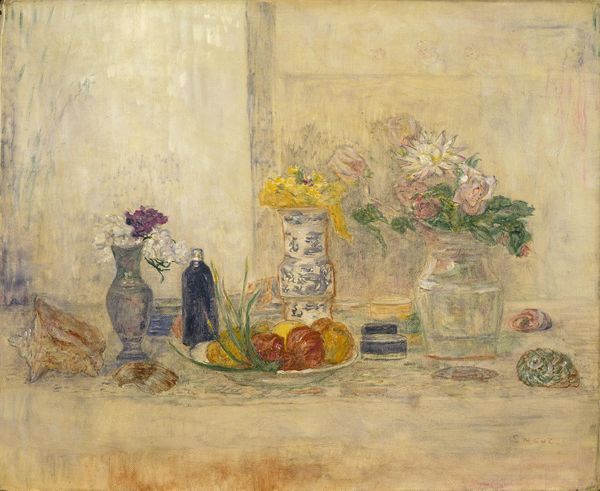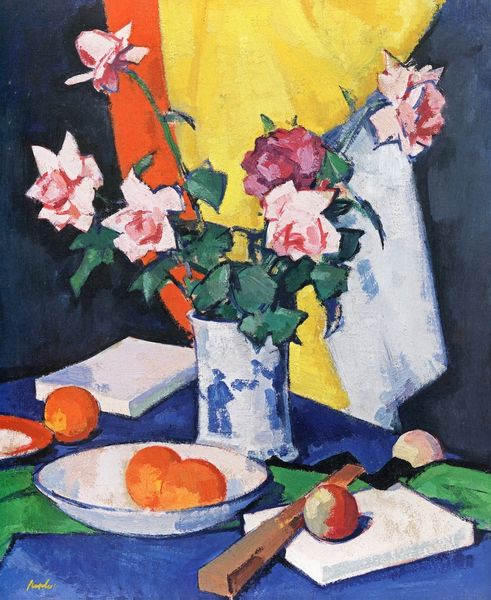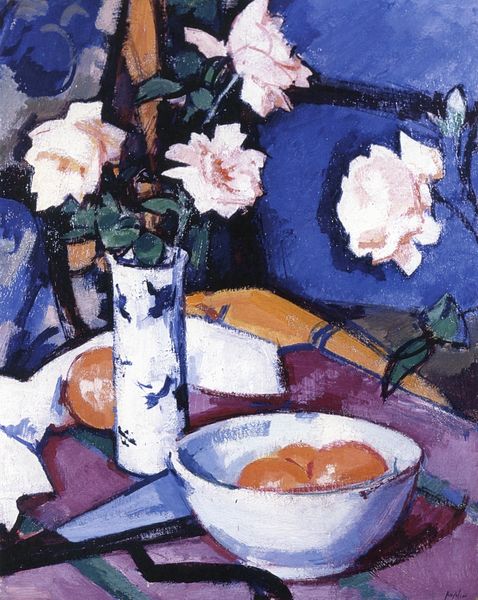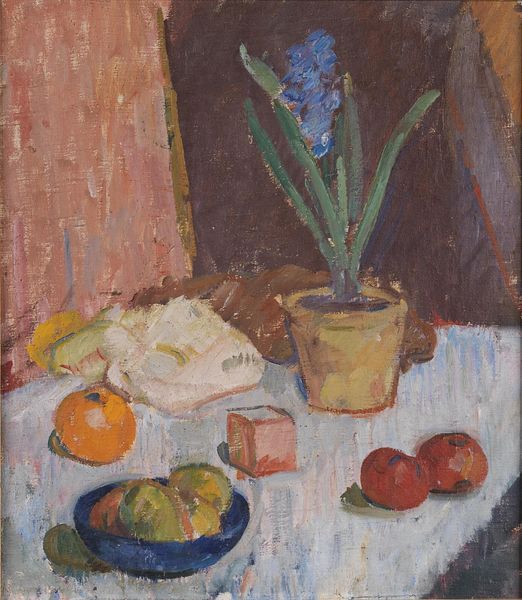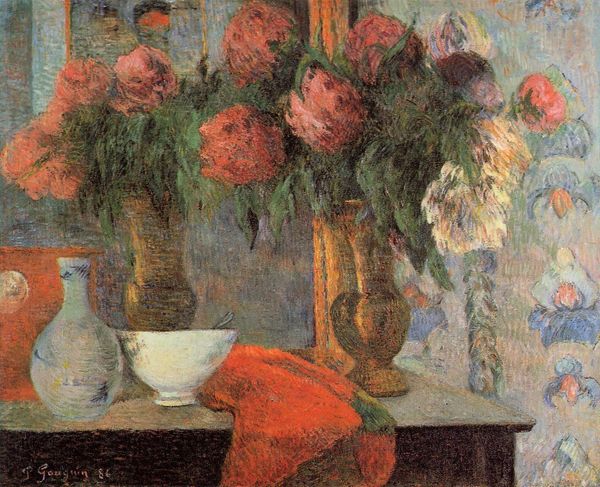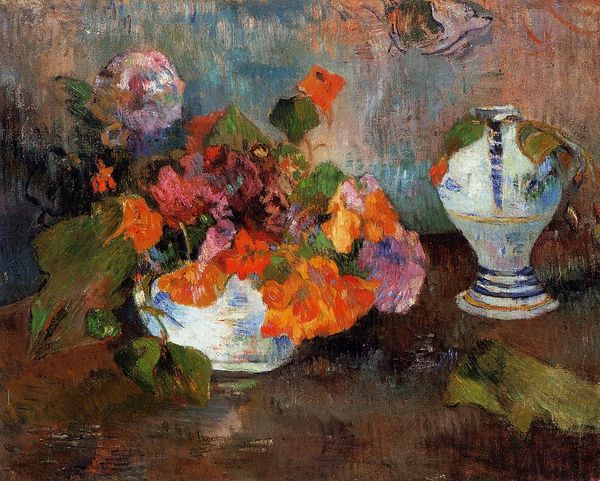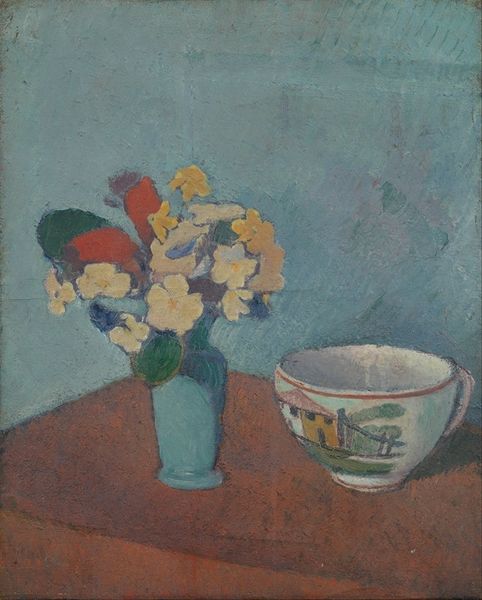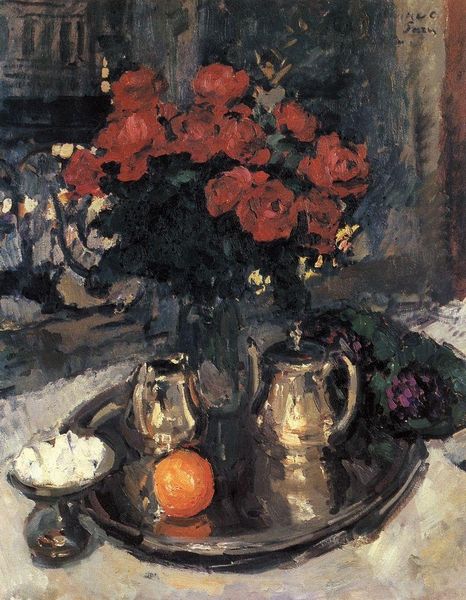
painting, oil-paint
#
painting
#
oil-paint
#
oil painting
#
intimism
#
genre-painting
#
post-impressionism
Copyright: Public Domain: Artvee
Paul Gauguin’s still life depicts flowers and a bowl of fruit, painted with oils on canvas. Gauguin was a leading figure in the Post-Impressionist movement, and this work reflects his move away from representational accuracy toward more subjective and symbolic representations of the world. Gauguin’s artistic practice cannot be separated from his colonialist attitudes. His time spent in Tahiti was romanticized in his art, but these depictions often exoticized and misrepresented indigenous people, reinforcing Western stereotypes. He took young Tahitian women as wives and models, contributing to a legacy of cultural appropriation. It’s difficult to reconcile the beauty of the brushwork in front of us with his personal history. This painting invites us to reflect on the complexities of art and ethics and to think critically about the historical and cultural contexts in which art is made and received. How do we reconcile an appreciation for Gauguin’s artistic innovation with the problematic aspects of his biography and the impact of his work on colonized cultures?
Comments
No comments
Be the first to comment and join the conversation on the ultimate creative platform.
